More Than 180 Commission in Joint Ceremony
Lexington, Va., May 16, 2021—Under blue skies in Foster Stadium, more than 180 young men and women, most of them VMI cadets, commissioned into the armed services May 15 in the annual ROTC Joint Commissioning Ceremony. The ceremony was also livestreamed for family and friends who could not attend the event in person.
After remarks by Maj. Gen. Cedric T. Wins ’85, superintendent, and an invocation by Col. Robert “Bob” Phillips ’87, Institute chaplain, approximately 110 individuals commissioned into the Army after taking their commissioning oath from Lt. Gen. Leslie C. Smith.
Smith, who currently serves as inspector general in the Office of the Secretary of the Army, received his commission from Georgia Southern University in 1983 as a field artillery officer and later branched as a chemical officer. He saw combat in Operations Enduring Freedom, Iraqi Freedom, and New Dawn.
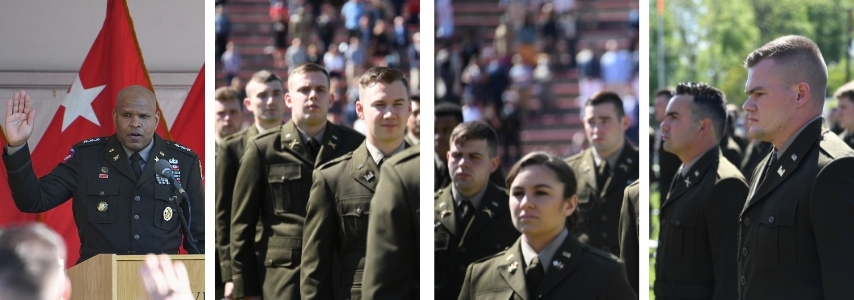
In his remarks to those about to commission, Smith emphasized the role of the junior officer. “Our current chairman [of the joint chiefs of staff] when he was chief of staff of the Army, Gen. [Mark] Milley, asked us what we fight for, and how that applies to the constitution of the United States. … What matters, cadets … is what you do to support and defend the constitution of the United States against all enemies, foreign and domestic.”
In closing, Smith urged commissionees to lead with “courage, commitment, and character.”
Administering the oath to the 13 individuals commissioning into the Marine Corps was Maj. Gen. David J. Furness ’87, assistant deputy commandant for plans, policy, and operations, U.S. Marine Corps.
Furness, who served as regimental commander during his time at VMI, served in Afghanistan during Operation Enduring Freedom and has since served in a number of supporting positions, among them director of the Expeditionary Warfare School and as legislative assistant to the commandant of the Marine Corps.
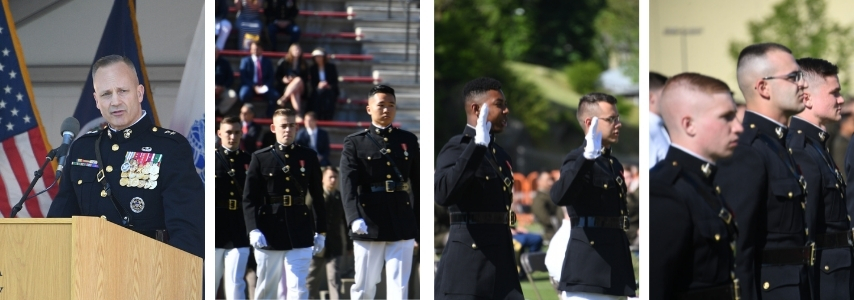
In his remarks, Furness told his listeners the story of Lt. Col. Horatio “Monk” Woodhouse Jr. ’36, who led a group of Marines in an assault on Sugar Loaf Hill during the Battle of Okinawa during World War II. Woodhouse’s Silver Star citation stated that he “boldly led his men through savage fire … and succeeded in gaining that bitterly contested terrain.”
Two weeks later, on May 30, 1945, Woodhouse was killed in action by a sniper’s bullet. He was described later by someone who knew him well as an officer who was “always placing himself at the point of friction” and “the greatest commander and Marine I ever knew.”
It was likely his experience at VMI, Furness noted, “the intangible benefits of a VMI education,” which formed Woodhouse’s character and taught him to lead from the front.
“This is now your history,” stated Furness. “This legacy of leadership and valor has been passed down to you.”
Commissioning just under 30 new Navy ensigns was Rear Adm. Michael Steffen, commander of the Second Fleet, U.S. Navy.
Steffen, a Naval aviator who flew more than 125 combat missions in support of Operation Iraqi Freedom, commissioned from Virginia Tech’s ROTC unit, so he began his remarks with a few lighthearted comments about the onetime rivalry between VMI and Virginia Tech.
The admiral then discussed the challenges and hardships of a military school, and the doubts that must be vanquished to succeed there before commissioning into an all-volunteer force. Overcoming the challenges of VMI, especially during the rat year, he commented, “says a lot about your character and will prove invaluable during your military career and especially in combat and in your life.”
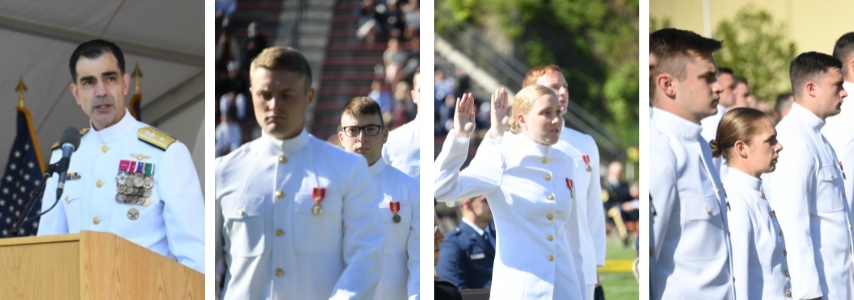
Serving as a Navy officer, Steffen noted, means being in a position of authority over more than 1.5 million enlisted personnel, both active duty and Reserve. “Those enlisted are, too, volunteers, and deserve quality leadership,” he said. “It will be your responsibility to provide it.”
In a world overflowing with challenges and individuals often acting from selfish interests, “you have chosen to adopt the ethos of the military, which is to serve,” Steffen commented. “When you say the oath this morning, you are giving testament that you are willing to commit yourself and your God-given talents to serving others through the service of our nation.”
This year’s Air Force commissionees numbered approximately 30 for the Air Force and two for the U.S. Space Force, which was established in December 2019. Administering the oath to both groups was Maj. Gen. John D. Caine ’90, who serves at the Pentagon as director of special programs and the Department of Defense Special Access Program Central Office, U.S. Air Force. Prior to that assignment, Caine was deputy commanding general assigned to the Special Operations Task Force—Operation Inherent Resolve in Iraq and Syria.
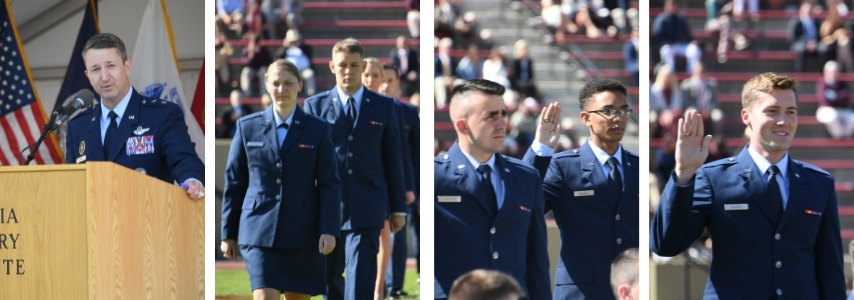
In his remarks, Caine discussed the portion of the officer’s oath in which an individual promises to “well and faithfully discharge the duties” of the office to which he or she has been assigned.
The virtues undergirding duty—courage, justice, wisdom, and temperance—were put forth by the Roman emperor and Stoic philosopher Marcus Aurelius. “All of these components make up what it is an officer and a leader in the armed forces in the United States of America,” said Caine.
“For us in the fabric of service, this is about a calling, a way of life,” he stated. “Frankly, it is a special trust and confidence placed in each of you by the people of the United States of America. … Duty is about earning every single day the confidence of those they are blessed to lead.”
After the joint commissioning ceremony was completed, each branch of the service held pin-on ceremonies in separate locations while those newly commissioned celebrated with families and friends.
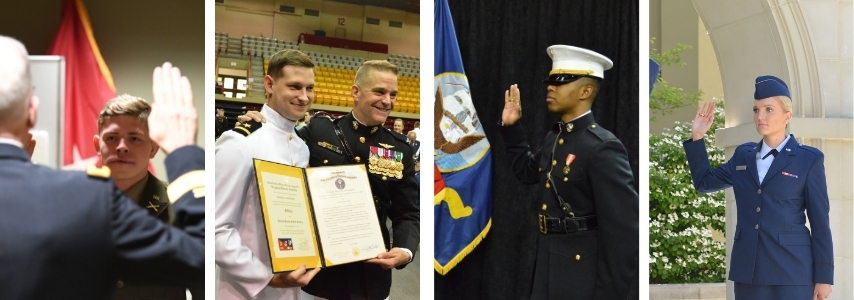
Mary Price
*VMI Photos by Mary Price and H. Lockwood McLaughlin
Communications & Marketing
VIRGINIA MILITARY INSTITUTE
.svg)
.png)